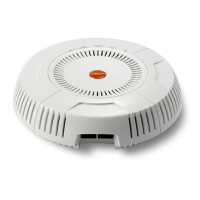Wireless Access Point
274 Configuring the Wireless AP
• All other DSCP values are set to QoS level 0 (the lowest level—
Best Effort).
Packet Filtering QoS classification
Filter rules can be used to redefine the QoS priority level to override
defaults. See “Filter Management” on page 393. This allows the QoS
priority level to be assigned based on protocol, source, or destination.
Voice Support
The QoS priority implementation on the AP gives voice packets the
highest priority to support voice applications.
High Density 2.4G Enhancement—Honeypot SSID
Some situations pose problems for all wireless APs. For example, iPhones will
remember every SSID and flood the airwaves with probes, even when the user
doesn’t request or desire this behavior. In very high density deployments, these
probes can consume a significant amount of the available wireless bandwidth.
The AP “honeypot” SSID targets this problem. Simply create an SSID named
honeypot (lower-case) on the AP, with no encryption or authentication (select
None/Open). Once this SSID is created and enabled, it will respond to any station
probe looking for a named open SSID (unencrypted and unauthenticated) that is
not configured on the AP. It will make the station go through its natural
authentication and association process. See “Honeypots” on page 299.
The following SSIDs are excluded from being honeypotted:
Explicitly whitelisted SSIDs. See “Honeypots” on page 299.
SSIDs that are encrypted and/or authenticated.
SSIDs that are configured on this AP, whether or not they are enabled.
Traffic for a station connected to the honeypot SSID may be handled in various
ways using other AP features:
Traffic may be directed to WPR (captive portal) to display a splash page
or offer the user the opportunity to sign in to your service (see “Web Page
Redirect (Captive Portal) Configuration” on page 286);
Traffic may be filtered (see “Filters” on page 389);

